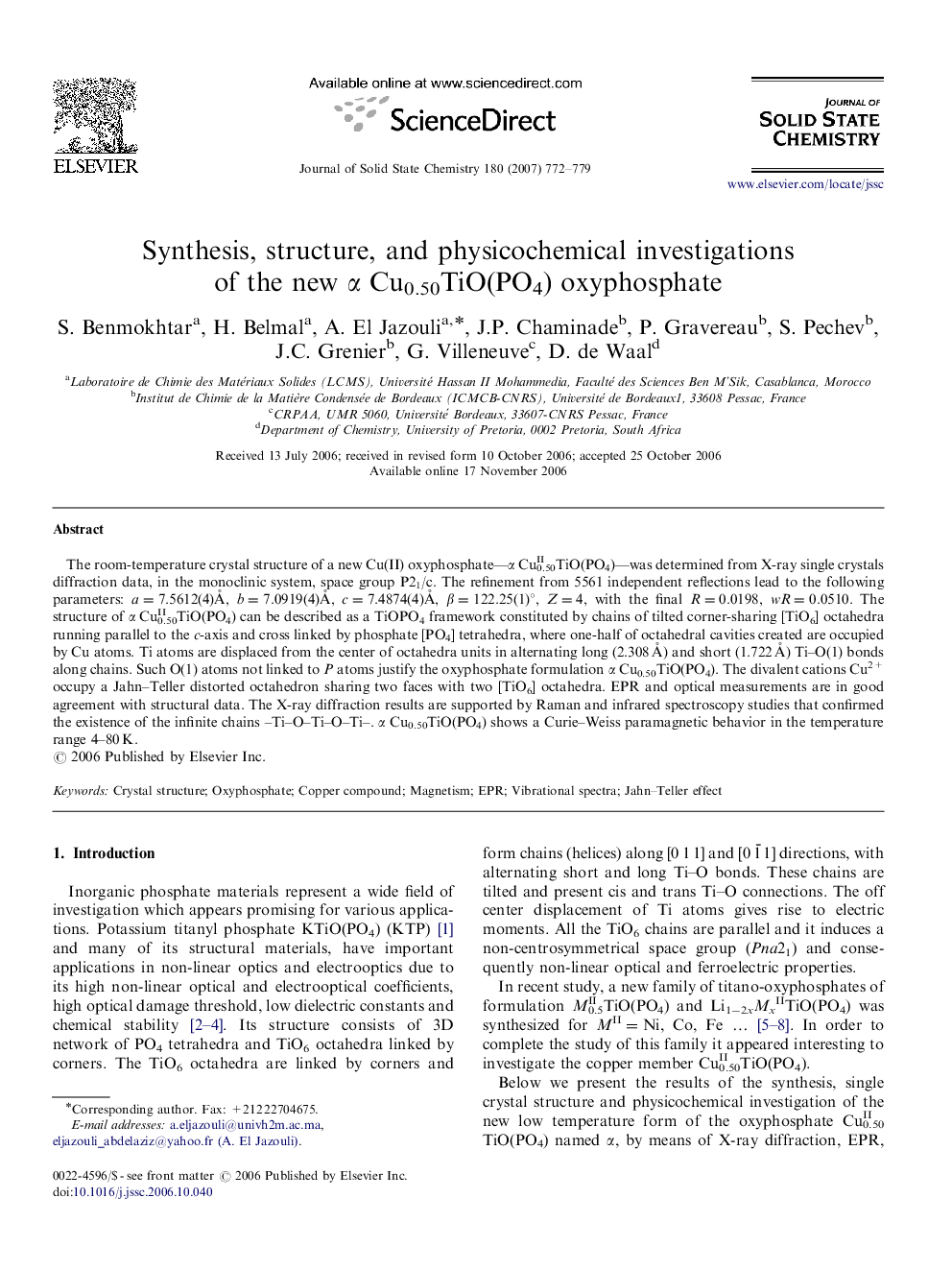| Article ID | Journal | Published Year | Pages | File Type |
|---|---|---|---|---|
| 1333445 | Journal of Solid State Chemistry | 2007 | 8 Pages |
The room-temperature crystal structure of a new Cu(II) oxyphosphate—α Cu0.50IITiO(PO4)—was determined from X-ray single crystals diffraction data, in the monoclinic system, space group P21/c. The refinement from 5561 independent reflections lead to the following parameters: a=7.5612(4)Å, b=7.0919(4)Å, c=7.4874(4)Å, β=122.25(1)°, Z=4, with the final R=0.0198, wR=0.0510. The structure of α Cu0.50IITiO(PO4) can be described as a TiOPO4 framework constituted by chains of tilted corner-sharing [TiO6] octahedra running parallel to the c-axis and cross linked by phosphate [PO4] tetrahedra, where one-half of octahedral cavities created are occupied by Cu atoms. Ti atoms are displaced from the center of octahedra units in alternating long (2.308 Å) and short (1.722 Å) Ti–O(1) bonds along chains. Such O(1) atoms not linked to P atoms justify the oxyphosphate formulation α Cu0.50TiO(PO4). The divalent cations Cu2+ occupy a Jahn–Teller distorted octahedron sharing two faces with two [TiO6] octahedra. EPR and optical measurements are in good agreement with structural data. The X-ray diffraction results are supported by Raman and infrared spectroscopy studies that confirmed the existence of the infinite chains –Ti–O–Ti–O–Ti–. α Cu0.50TiO(PO4) shows a Curie–Weiss paramagnetic behavior in the temperature range 4–80 K.
Graphical abstractProjection of the structure of α Cu0.50TiO(PO4) along the a-axis.Figure optionsDownload full-size imageDownload as PowerPoint slide
